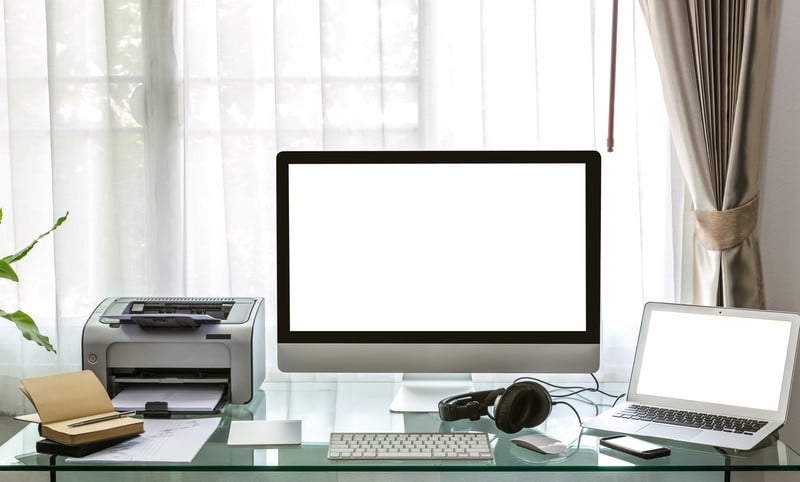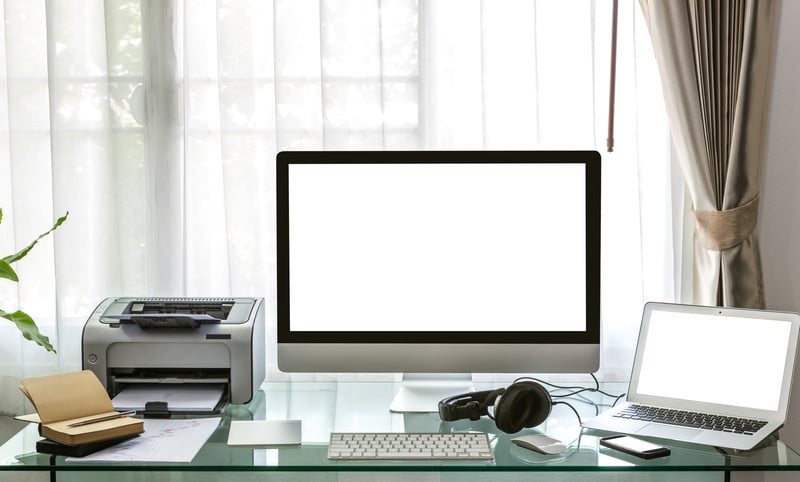Small business owners need to be available nearly 24/7 in today’s connected world because there’s always just one more task to take care of. If this accurately describes you, then here’s the good news:
You may be able to save a bundle on your taxes by making effective use of the home office deduction.
It’s simple. If you have a dedicated workspace in your home, perhaps a spare room, basement, or attic AND you use this location regularly to conduct business, then you may qualify for the home office deduction and write off the cost of your workspace, plus you could earn additional tax-saving deductions as well.
How to Qualify for this Valuable Tax Savings Advantage
The home office deduction is a time-honored tax savings strategy, recognized for years by the IRS. Like any other tax deduction, you simply need to make certain you qualify for this deduction and it’s documented correctly and the tax savings are yours to keep, money you can put right back into your pocket or invest back in your business.
So how do you qualify? There are three main requirements that are easy for you to determine:
- You must be in business
- You must use part of your home only for businesses
- You must use your home office space for business on a regular basis
To take advantage of this tax saving deduction, you must meet all three of the above requirements, and meet any ONE of the following:
- The home office is your principal place of business
- You meet clients or customers at your home office
- You have a separate structure on your property used only for business purposes
- You store inventory or product samples at home
The two major requirements to qualify for the home office deduction are exclusive and regular use and principal place of business.
What exactly does exclusive and regular use mean, and how do you determine if it’s your principal place of business? Let’s take a deeper dive into the details about how to qualify for this key tax saving deduction.
First, your home office workspace must be used regularly in the conduct of your business, AND the space must be used exclusively for that purpose.
Regular and exclusive use means that your home office computer is NOT used by your teenagers to play video games. And you can’t convert your home office by day into your family dining room by night.
Regular use means you use a specific area of your home on a frequent basis, not just once in a while. For example, let’s say you have a home office workspace set up in a spare bedroom and use it on a weekly basis to contact and schedule clients or perhaps bill customers. This would meet the test of regular use.
If you only work from your home office space occasionally, a few times a year and its use is incidental to your business, this would most likely not qualify as regular use.
The definition of exclusive is that you must use a specific area of your home only for your trade or business. The space must be identified as separate but does not need to be a permanently partitioned off area of your home. If you do not have a specific area designated for your home office, you are not entitled to take this deduction.
Also keep in mind, even if you do not meet the test for exclusive use, you may still be eligible to deduct ordinary and necessary business expenses that you incur such as long-distance phone calls, a separate business telephone line, office supplies, and equipment.
And it’s important to remember that participating in administrative functions in places other than your home office, such as a hotel room or your car, does not disqualify you from taking the home office deduction.
Also, if you use part of your home for storage of product samples or inventory, that’s another exception to the exclusive use rule. You may use part of this space for personal purposes and still qualify for the home office deduction.
Second, your home office must also be either your principal business location, OR a place where you regularly meet with customers or clients. If you are self-employed or own a small business and work from home running that business, your home is your principal place of business.
Alternatively, if you work from another location too, you may still qualify your home as your principal place of business if you use it exclusively and regularly for administrative or management activities. This can include billing customers, keeping books and records, and writing reports among other business tasks.
Having an office at another location, but regularly meeting with customers and clients or suppliers at your home still enables you to take the deduction for that portion of your home office workspace in which you meet with them.
What if your business has just one office — in your home — but you do most of your work elsewhere? Remember that the requirement is that the office be the principal place of business, not your principal office.
As long as you’re using your home office to conduct your administrative or management chores and you don’t make substantial use of any other fixed location to conduct those tasks, you can qualify for the home office deduction.
If you are an employee of another company but also have your own part-time business based in your home, you can pass this test even if you spend much more time at the office where you work as a full-time employee.
This rule makes it much easier to claim home office deductions for individuals who conduct most of their income-earning activities somewhere else such as outside salespersons, tradespeople, or professionals.
Just What Qualifies as a Business?
Of course, to qualify for the home office tax deduction the first question you must answer is: What constitutes a business? If you’re self-employed or run your own small business, then the answer should be clear cut. Still, there are some gray areas, so let’s take a closer look.
As with the regular-use test, whether your work qualifies as a business depends on the circumstances — the more substantial the activities, in terms of time and effort invested and income generated, the more likely you are to qualify for the home office deduction.
Making money from your efforts is a prerequisite, but for purposes of this tax deduction, profit alone isn’t necessarily enough.
How Big of a Tax Savings Are We Talking About?
The amount of the tax savings you stand to earn will depend on your costs. But the home office tax deduction often provides significant tax savings because you may be able to include a portion of your mortgage or rent plus many other standard household expenses. Also, a home office deduction may unlock other deductions like an increased mileage deduction.
Your actual home office workspace is just a starting point. You can also add your home office furniture and office equipment. Your phone, computer, printer, file cabinet, desk and chair, pictures and paintings, bookcase and books and furniture.
Then there’s the supplies that you use, high-speed internet connections, online and physical subscriptions, home office supplies, etc. Taken together, this can be a couple thousand dollars a year in deductions.
There are two easy ways to calculate the home office deduction: The traditional expense method, or by taking the simplified home office deduction. For most small business owners who make substantial and regular use of a home office workspace, the traditional expense method should earn you the biggest tax savings advantage.
Traditional Home Office Deductions
The traditional method includes the actual expenses you incur for your home. Such expenses fall into two broad categories: Direct and indirect.
You can deduct 100% of the direct expenses related to your home office workspace, including maintenance, furniture, equipment and supplies. And you can also deduct a portion of the indirect expenses related to your home.
Those expenses include a long list of ordinary household expenses that can really boost your potential tax savings, including: Mortgage interest; property taxes; utilities, including electricity, gas, water, sewer, and trash; maintenance; insurance and much more.
Calculating your home office deduction is not difficult. The first thing you need to do is determine the deduction percentage. This can easily be done by measuring your home office, or, if the rooms in your house are all roughly the same size, dividing the number of rooms you maintain for your business by the total number of rooms in your home.
To illustrate just how large this tax saving deduction can be for you, consider the following example. If your mortgage is $2,000 a month, you would be paying $24,000 per year. Water and sewer at $100 a month times 12 months would be $1,200. Electricity, $200 per month times 12 months would be $2,400. Taxes and property insurance, $10,000 a year. That’s a total of more than $37,000 per year in household expenses.
To calculate your home office deduction, simply multiply the percentage of home office space by your annual expenses. Let’s say your home office measures out at 10% or your total area, you would have a $3,700 deduction — $37,000 times 10%.
Simplified Home Office Deduction
As an alternative to computing the actual costs of your expenses, the IRS offers a simplified method to make the home office deduction calculation easier. You deduct $5 for every square foot of your home office. So, all you need to do is measure the square footage of your home office and do the simple math.
For example, if your home office is 250 square feet, you’ll get a $1,250 deduction ($5 x 250). That’s all there is to it. You can only use this method if your home office workspace is 300 square feet or less.
In order to get the largest home office deduction, you’ll likely want to calculate both methods to find which deduction is larger. Remember, your deduction can’t exceed the gross income from the business use of your home.
Home Sweet Home-Office Deduction
Take just a few minutes to make sure you have your measurements, expenses, and calculations up to date and properly documented. Going through this process monthly, or even quarterly, will ensure that when tax time arrives, you have all the documentation ready for your CPA to review.
To sum it all up, the home office deduction is probably the most valuable and yet most misunderstood deduction in the tax code. At TSP Family Office, we can show you exactly how to accurately calculate this valuable deduction and document if properly so you can get the full benefit of this tax saving deduction. Call us today at (772) 257-7888 to learn more.


;)